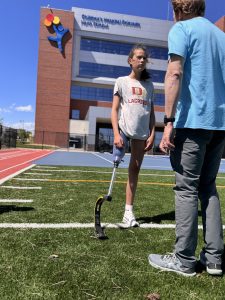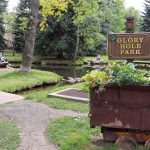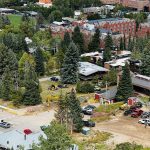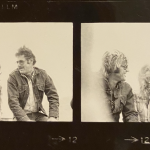The Optimist: The highest return on government

Courtesy photo
Wildfire. Of all the risks we face as a community, only wildfire has the potential to alter everything we love about the upper Roaring Fork Valley in a day. In our bones, every resident of this valley could feel the experience of residents of Pacific Palisades, Lahaina, and Boulder County— communities like ours that sit on the wilderness boundary.
The accidental sibling of wildfire risk is our homeowner’s insurance market. We all know affordability is the greatest challenge our community faces. As property insurance costs skyrocket, we take another gut-punch to affordability. And if more property insurers exit this market, mortgages will be impossible to obtain. Only cash purchasers who can “self-insure” will be able to purchase homes in the valley. These economic threats from wildfire risk are here, now.
Our community is unique in several ways in thinking about wildfire risk. First, we must consider not only our residents, but also our visitors. This reality means planning to protect a population that can run two to four times as large as our resident community during peak fire season. When our visitors make plans to travel here, they do not consider fire risk in their decisions. We must do that for them.
Second, we have resources and creativity that dwarfs any similar community in the U.S. Our local fire district, led recently by Rick Balentine and now by Jake Andersen, has made two major moves in the past decade. One, they have built exceptional relationships with fire districts throughout the region. Where there used to be insularity, fire districts up and down the valley now view wildfire as a community-wide threat and regularly provide mutual aid. Two, we have seen far-sighted investments in fire mitigation and prevention — from controlled burns to the PanoAI cameras that continuously search for early signs of smoke from wildfires. More recently, individuals who want to support the fire district can do so through the Aspen Wildfire Foundation, a 501(c)(3) that supports our fire district. Contributions are tax deductible and may save your insurance dollars, your home, and your family.
However, relative to the existential and economic threat of wildfire, we have under-invested in fire prevention, mitigation, and response. In 2024, the Aspen Fire District had an annual operating budget of only $9.5 million for an area with so much wilderness boundary. I want to quantify how under-invested we are, both in dollars and life-altering impacts. In 2024, Pitkin County tabulated $66 billion of actual residential property value. These calculations tend to have a conservative bias, so we can assume the true market value is between $70 billion and $100 billion. A wildfire that destroyed 10% of the residential structures would destroy somewhere near $10 billion of property value.
The non-economic damage would be greater. But here’s where optimism comes in.
Reducing wildfire risk is the lowest cost, highest return activity in our community. This November, two wildfire issues will be on the ballot. First, we have the easiest “yes” in the history of voting. On Issue 6A, the Aspen Fire District asks voters to approve extension of the existing mill levy. This vote simply extends the fire district mill levy that expires in 2026. It adds no new taxes. Next, we have the second-easiest “yes” in the history of voting. Aspen voters are asked to approve a 0.5% sales tax in the city. That is five cents on a $10 purchase. It does not apply to groceries, prescriptions, and other exempt necessities. Why is this an appropriate tax? Well, it asks our visitors, who pay a heavy share of the eligible Aspen sales tax, to contribute to their own protection.
Even with passage of these measures, the dollars we are asked to invest in our fire district are too small. In fact, every dollar we invest in aggressive risk mitigation likely returns 10x over the next couple decades. Here’s how. A fair estimate is that the upper valley pays about $150 million annually in residential homeowner’s premiums. Let’s assume that insurance rates will increase 12% each year, a conservative assumption. Imagine that aggressive fire mitigation and response efforts could reduce insurance inflation by one-third. By 2035, we will have saved $600 million in cumulative insurance premiums. The savings will increase every year thereafter. In 20 years, we will save a cumulative $5 billion in insurance premiums. That’s 5 with a B.
Should we be willing to invest 10% of those potential savings to achieve them? 25%? If so, our community should be willing to invest $500 million to $1.25 billion in fire prevention, mitigation, and response over the next two decades. Now leading Aspen Wildfire Foundation, Rick Balentine is already engaging with insurers to make sure they understand our far-sighted plans to reduce wildfire risk. But it’s clear that $9.5 million in annual fire district budget is a fraction of what we should invest to reduce fire risk.
If affordability matters, we must also incent property insurers to remain in this market. We want property insurers to know our market as a uniquely safe risk in the Mountain West. No mortgage is available without homeowner’s insurance. And if no mortgages are available, the only people who can purchase homes here will be those who can pay cash and absorb the risk of total loss.
Aside from supporting our public schools, I cannot think of a higher direct and indirect ROI from government. My only question to our fire district is why they do not ask more of us. They are the heroes who risk themselves for all of us. We owe them the resources they need to protect us. And in the greatest deal imaginable, if we arm them with the resources they need, we will reap insurance savings, we will protect mortgage availability, and we will reduce the risk of a community-altering fire. We can all check “yes” on 6A and 6B.
But next time, ask us for more, please!








